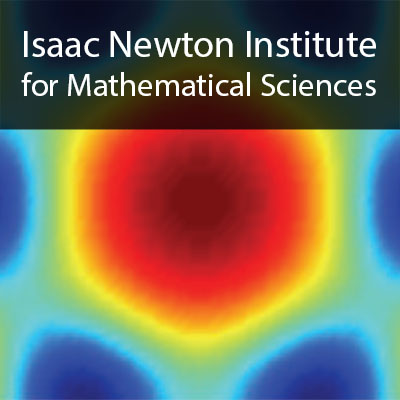The Five S's: Chemical Swimming, Sailing, Surfing, Squirming and Swarming
Duration: 49 mins 49 secs
Share this media item:
Embed this media item:
Embed this media item:
About this item

| Description: |
Brady, J (CALTECH (California Institute of Technology))
Wednesday 26 June 2013, 09:00-09:45 |
|---|
| Created: | 2013-07-01 15:56 |
|---|---|
| Collection: | Mathematical Modelling and Analysis of Complex Fluids and Active Media in Evolving Domains |
| Publisher: | Isaac Newton Institute |
| Copyright: | Brady, J |
| Language: | eng (English) |
| Abstract: | The design of nanoengines that can convert stored chemical energy into motion is an important challenge of nanotechnology, especially for engines that can operate autonomously. Recent experiments have demonstrated that it is possible to power the motion of nanoscale and microscale objects by using surface catalytic reactions -- so-called catalytic nanomotors. The precise mechanism(s) responsible for this motion is(are) still debated, although a number of ideas have been put forth. Here, a very simple mechanism is discussed: A surface chemical reaction creates local concentration gradients of the reactant (the fuel) and product species. As these species diffuse in an attempt to re-establish equilibrium, they entrain the motor causing it to move. This process can be viewed either as osmotic propulsion or as self-diffusiophoresis. The simplest way to break symmetry and achieve motion is by an asymmetric reactivity on the motor surface. The mathematical description of suc h motion is analogous to that used to describe the swimming of microorganisms, hence the name 'chemical swimming.' However, symmetry can also be broken by the motor's shape and, even for uniform reactivity, propulsion can be achieved -- 'chemical sailing.' A motor particle at an air-water interface can change the local concentration of surface-active agents and propel itself -- 'chemical surfing.' And even local variations of hydrodynamic mobility and interactive potential between the motor and the fuel can lead to net motion, a form of 'chemical squirming.' The implications of these mechanisms on the attainable propulsive speeds as a function of reaction rate and fuel concentration will be discussed and compared with Brownian dynamics simulations. It will also be shown that chemically active particles can attract or repel each other through long-range 'Coulomb-like' interactions. And suspensions of active particles can exhibit Debye-like screening leading to 'chemical swarming.' |
|---|---|
Available Formats
| Format | Quality | Bitrate | Size | |||
|---|---|---|---|---|---|---|
| MPEG-4 Video | 640x360 | 1.93 Mbits/sec | 723.62 MB | View | Download | |
| WebM | 640x360 | 950.62 kbits/sec | 346.97 MB | View | Download | |
| iPod Video | 480x270 | 520.82 kbits/sec | 190.03 MB | View | Download | |
| MP3 | 44100 Hz | 249.77 kbits/sec | 91.23 MB | Listen | Download | |
| Auto * | (Allows browser to choose a format it supports) | |||||

